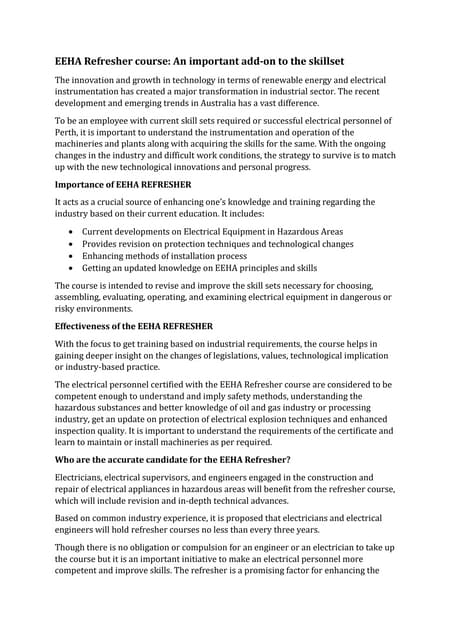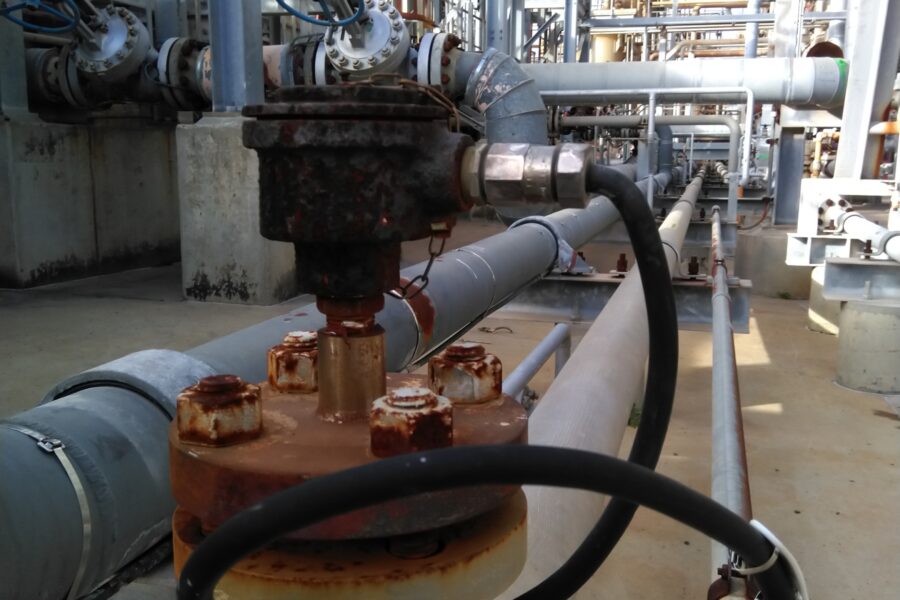Roar Solutions Can Be Fun For Everyone
Roar Solutions Can Be Fun For Everyone
Blog Article
The Best Guide To Roar Solutions
Table of ContentsRoar Solutions Can Be Fun For AnyoneSome Ideas on Roar Solutions You Need To KnowRoar Solutions Can Be Fun For Everyone
In such an ambience a fire or explosion is possible when 3 basic conditions are met. This is often referred to as the "unsafe area" or "burning" triangle. In order to secure installations from a prospective explosion an approach of evaluating and identifying a potentially hazardous location is called for. The function of this is to guarantee the appropriate selection and installment of devices to ultimately prevent a surge and to make sure security of life.
(https://dzone.com/users/5292804/roarsolutions.html)
No devices ought to be set up where the surface area temperature level of the tools is better than the ignition temperature level of the provided risk. Below are some typical dust harmful and their minimal ignition temperature level. Coal Dirt 380C 225C Polythene 420C (melts) Methyl Cellulose 420C 320C Starch 460C 435C Flour 490C 340C Sugar 490C 460C Grain Dust 510C 300C Phenolic Material 530C > 450C Aluminium 590C > 450C PVC 700C > 450C Residue 810C 570C The probability of the threat existing in a focus high adequate to trigger an ignition will certainly vary from place to place.
In order to identify this risk an installment is separated right into locations of danger depending upon the amount of time the hazardous is present. These locations are described as Areas. For gases and vapours and dirts and fibres there are three zones. Area 0 Area 20 A harmful environment is extremely likely to be present and might be existing for long durations of time (> 1000 hours annually) or even continually Area 1 Zone 21 A dangerous atmosphere is feasible however unlikely to be existing for lengthy periods of time (> 10 450 C [842 F] A classification of T6 means the minimal ignition temperature level is > 85 C [185 F] Hazardous location electrical equipment perhaps created for use in higher ambient temperature levels. This would certainly suggested on the rating plate e.g. EExe II C T3 Ta + 60C( This means at 60C ambient T3 will not be surpassed) T1 T1, T2, T3, T4, T5, T6 T2 T2, T3, T4, T5, T6 T3 T3, T4, T5, T6 T4 T4, T5, T6 T5 T5, T6 T6 T6 A T Course score of T1 indicates the optimum surface area temperature generated by the instrument at 40 C is 450 C. Thinking the connected T Class and Temperature level rating for the tools are proper for the area, you can constantly use a tool with a much more stringent Division score than required for the location. There isn't a clear answer to this inquiry regrettably. It really does rely on the kind of tools and what repair services need to be performed. Equipment with details test treatments that can't be done in the field in order to achieve/maintain third party rating. Have to come back to the factory if it is prior to the tools's service. Field Repair Service By Authorised Personnel: Complicated screening might not be required nonetheless particular treatments might need to be adhered to in order for the equipment to maintain its 3rd party ranking. Authorised workers have to be used to perform the work appropriately Repair work need to be a like for like replacement. New part need to be considered as a direct substitute needing no unique screening of the tools after the repair work is total. Each tool with a hazardous rating ought to be examined individually. These are outlined at a high level below, however, for more in-depth details, please refer straight to the standards.
Things about Roar Solutions
The devices register is an extensive database of devices records that consists of a minimum set of areas to determine each thing's place, technical criteria, Ex lover classification, age, and ecological data. This information is crucial for monitoring and handling the equipment properly within harmful areas. On the other hand, for regular or RBI tasting inspections, the quality will certainly be a mix of Detailed and Close assessments. The proportion of Detailed to Close evaluations will be determined by the Equipment Danger, which is evaluated based on ignition threat (the probability of a source of ignition versus the possibility of a combustible atmosphere )and the unsafe area category
( Zone 0, 1, or 2). This variation will likewise influence the resourcing demands for job preparation. As soon as Lots are defined, you can create Go Here tasting plans based upon the example dimension of each Whole lot, which refers to the number of arbitrary tools items to be checked. To figure out the required example size, two facets require to be evaluated: the size of the Lot and the classification of inspection, which indicates the level of initiative that ought to be applied( minimized, normal, or boosted )to the inspection of the Great deal. By incorporating the classification of inspection with the Great deal size, you can then establish the suitable being rejected requirements for an example, suggesting the permitted variety of damaged things located within that sample. For more information on this procedure, please describe the Power Institute Standards. The IEC 60079 typical advises that the optimum interval in between inspections must not go beyond 3 years. EEHA evaluations will additionally be carried out beyond RBI projects as part of arranged upkeep and devices overhauls or repair services. These assessments can be credited towards the RBI sample dimensions within the affected Lots. EEHA inspections are conducted to recognize faults in electric tools. A heavy racking up system is important, as a single tool might have several faults, each with differing levels of ignition danger. If the mixed rating of both assessments is less than two times the fault rating, the Great deal is deemed appropriate. If the Great deal is still thought about unacceptable, it should undergo a full inspection or validation, which may trigger more stringent assessment procedures. Accepted Great deal: The reasons of any mistakes are identified. If an usual failure mode is located, extra tools may call for inspection and repair. Faults are identified by extent( Safety, Honesty, Housekeeping ), making sure that immediate problems are analyzed and addressed promptly to reduce any kind of effect on safety and security or operations. The EEHA database need to track and tape-record the lifecycle of mistakes along with the rehabilitative actions taken. Applying a robust Risk-Based Examination( RBI )method is essential for ensuring compliance and security in managing Electrical Devices in Hazardous Locations( EEHA) (Roar Training Solutions). Automated Fault Scoring and Lifecycle Administration: Easily take care of mistakes and track their lifecycle to enhance evaluation precision. The introduction of this assistance for risk-based assessment further reinforces Inspectivity's setting as a best-in-class solution for regulatory conformity, in addition to for any type of asset-centric examination usage case. If you have an interest in finding out more, we invite you to ask for a demonstration and discover just how our remedy can change your EEHA administration procedures.
Roar Solutions Can Be Fun For Anyone

In regards to explosive risk, a harmful area is an environment in which an eruptive ambience exists (or may be anticipated to be existing) in quantities that call for special precautions for the construction, installment and use of tools. electrical refresher course. In this short article we check out the obstacles dealt with in the workplace, the threat control steps, and the called for proficiencies to function safely
These substances can, in certain problems, develop eruptive ambiences and these can have major and unfortunate consequences. Most of us are familiar with the fire triangular get rid of any kind of one of the three aspects and the fire can not take place, yet what does this mean in the context of hazardous areas?
In many circumstances, we can do little concerning the levels of oxygen in the air, however we can have significant influence on resources of ignition, as an example electric tools. Hazardous areas are documented on the dangerous area category illustration and are identified on-site by the triangular "EX" indication. Below, among various other crucial details, areas are divided into three types depending on the risk, the probability and duration that an explosive environment will exist; Area 0 or 20 is deemed the most dangerous and Area 2 or 22 is considered the least.
Report this page